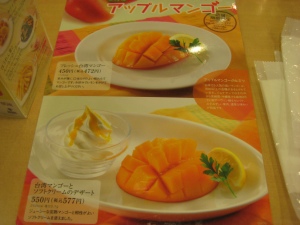Nothing gets our weekend started (after work, of course) like another installment of Ant’s weekly beer review!
Framboise Lambic – Malt Beverage with Raspberries added
Brouwerij Lindemans’ (Vlezenbeek, Belgium)
750mL
2.5% ABV

Bottle Description:
Lindemans Framboise is a lambic made from local barley, unmalted wheat, and wild yeast. After spontaneous fermentation raspberries are added creating a secondary fermentation and yielding a beer of exceptional flavor and complexity.
Usually an overlooked style, Lambics provide the most fascinating and uncommon flavors found in beers. Lambics (unblended)/Guezes are unique spontaneously fermented sour ales from the area around and in the Senne Valley (Brussels, Belgium) that still use centuries old farmhouse brewing. While Straight Lambics are unblended and single-batch, Guezes are produced by mixing one, two, and three year old lambics. These beers are characterized by their earthy, goaty, and barnyard like aromas and have sour/acidic flavors that should balance with the malt and wheat. Because wild yeast and bacteria ferment all the sugars, they tend to be bottled when they have completely fermented. Lambics and Guezes are dwindling in numbers due to their “unique” attributes. Not many commercial examples can be found in the U.S. (I’ve had a hard time finding any). However, lambic blenders began adding fruits and sugar post fermentation to make them more palatable to the wider audience. The sweetness and fruitiness of these Fruit Lambics balance and sometimes blanket the lesser-enjoyed sourness.
Contrastingly enough, Fruit Lambics are definitely easier to find especially on the shelves of Whole Foods or Trader Joe’s. I bought mine for around $9 at BevMo! The Fruit Lambic sampled today is brewed by Lindemans’, the first brand of Lambic imported to the U.S. (1979). Framboise, meaning raspberries, was the fruit of choice blended with this beer. This beer pours deep purplish-red with magenta highlights and rises with a strong dark pink head. The carbonation is reminiscent of champagne. The aroma is overflowing with raspberries but finishes with a strange earthy/barnyard funk with hints of acidic character. No hop or malt aroma dominates in this fruit lambic. Lindemans Framboise has good clarity when poured carefully, but yeast sediment from the bottom of the bottle can make this beer very cloudy. Raspberries are strongly evident in flavor but is well balanced by a high level of sourness/acidity (which may also stem from the fruit itself). A slight oaky character carries through but are very minimal. Medium-bodied and highly carbonated, its high level of fruitiness almost makes it hard to call this a beer (lacking malt and hop characteristics) and more like a sparkling wine. Although this beer is quite enjoyable, I find it lacking in lambic complexity. The flavors lean a little too much towards the raspberries and can confuse people in thinking they’re drinking sparkling raspberry juice.
Category 17F: Fruit Lambic
Aroma: 10/12
Appearance: 3/3
Flavor: 15/20
Mouthfeel: 5/5
Overall: 8/10
Total: 41/50
– Ant




 Posted by Vince
Posted by Vince 